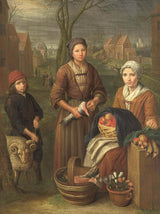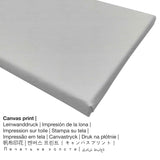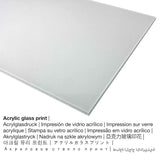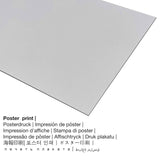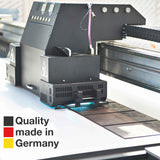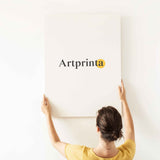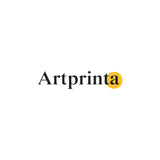Peter Snijers, 1700 - nwanyị na-ere ahịa - ọmarịcha nka
Ụtụ gụnyere. Mbupu gbakọrọ na ndenye ọpụpụ.
Ngwaahịa nka
Ihe osise a karịrị afọ 320 The woman peddler mere site Peter Snijers. N'ịga n'ihu, ihe osise a bụ nke Rijksmuseum's digital collection, which is the largest museum for Dutch art and history from the Middle Ages to the present day. The classic art artwork, which is in the ngalaba ọha a na-enye ya site n'ikike nke Rijksmuseum.: . Ọzọkwa, itinye n'ọnọdụ Eserese usoro nwere oke akụkụ nke 3: 4, nke pụtara na ogologo bụ 25% mkpụmkpụ karịa obosara. Peter Snijers was a male painter from the Netherlands, whose artistic style can primarily be assigned to Baroque. The Baroque artist lived for 71 years, born in the year 1681 ma nwụọ na 1752.
Ngwa ngwaahịa ndị ahịa anyị nwere ike ịhọrọ
In the dropdown lists next to the product offering you can select your prefered material and size. You can choose your your favorite size and material among the following options:
- Glass acrylic ebipụtara (nke nwere ezigbo mkpuchi iko n'elu): An acrylic glass print, which is often referenced as a print on plexiglass, will transform an original into brilliant décor. Additionally, it makes a great alternative option to canvas or dibond fine art prints. Your own replica of the artwork will be printed with the help of modern UV printing technology. It creates impressive and rich colors. With an acrylic glass fine art print sharp contrasts and smaller painting details become more identifiable because of the subtle gradation.
- Mbipụta nke aluminom: An Aluminium Dibond print is a print with a true depth. A direct Direct Print on Aluminum Dibond is the ideal start to fine art prints with aluminum. The white and bright components of the work of art shine with a silk gloss, however without glow. The colors of the print are bright and luminous in the highest definition, details are crisp and clear. The direct UV print on Aluminum Dibond is the most popular entry-level product and is a modern way to showcase artworks, since it draws focus on the replica of the artwork.
- Akwụkwọ mmado ebipụtara (akwa akwa akwa): The poster print is a UV printed canvas paper with a slightly rough structure on the surface, which resembles the original artwork. Please note, that depending on the size of the poster print we add a white margin between 2-6cm around the print, which facilitates the framing with your custom frame.
- Mbipụta kanvas: A printed canvas applied on a wooden frame. Your canvas print of this masterpiece will let you turn your individual into a large collection piece like you know from art galleries. Canvas prints are relatively low in weight, meaning that it is quite simple to hang up the Canvas print without any wall-mounts. A canvas print is suited for any kind of wall.
Nkwupụta iwu: We try the best we can in order to depict the products as exact as it is possible and to display them visually on the respective product detail pages. Although, some pigments of the printing material, as well as the imprint may diverge marginally from the image on your device's monitor. Depending on your settings of your screen and the nature of the surface, color pigments may not be printed as exactly as the digital version shown here. Bearing in mind that our art prints are processed and printed by hand, there might as well be minor discrepancies in the motif's exact position and the size.
Banyere ngwaahịa a
| Bipụta ngwaahịa: | mmepụta nka |
| Usoro mmeputakwa: | dijitalụ mmeputakwa |
| Production usoro: | mbipụta dijitalụ (Mbipụta UV ozugbo) |
| Ihe ngosi: | arụpụtara na Germany |
| Ụdị ngwaahịa: | a na-achọ |
| A na-atụ aro iji ngwaahịa eme ihe: | ihe osise nka, nka mgbidi |
| Ndepụta: | usoro eserese |
| Oke akụkụ onyonyo: | ogologo ruo obosara 3: 4 |
| Nkọwa: | ogologo bụ 25% mkpụmkpụ karịa obosara |
| Nhọrọ akwa: | akwụkwọ mmado (akwụkwọ kwaaji), mbipụta ọla (aluminium dibond), mbipụta kanvas, mbipụta iko acrylic (nwere ezigbo mkpuchi iko) |
| Canvas dị n'elu ihe nrịbama (mbipụta kanvas) nha dị iche iche: | 30x40cm - 12x16", 60x80cm - 24x31", 90x120cm - 35x47" |
| Acrylic glass print (nwere ezigbo mkpuchi iko) nhọrọ: | 30x40cm - 12x16", 60x80cm - 24x31", 90x120cm - 35x47" |
| Mbipụta akwụkwọ mmado (akwụkwọ kwaaji): | 30x40cm - 12x16", 60x80cm - 24x31", 90x120cm - 35x47" |
| Ụdị mbipụta aluminom dibond: | 30x40cm - 12x16", 60x80cm - 24x31", 90x120cm - 35x47" |
| Igwe onyonyo: | biko buru n'uche na mmeputakwa a enweghi etiti |
Data ndabere gbasara ọrụ nka
| Aha ọrụ nka: | "The woman peddler" |
| Nhazi nka nka: | sere |
| Otu sara mbara: | nka ochie |
| Nhazi oge: | 18th narị afọ |
| Year: | 1700 |
| Afọ nka: | karịa afọ 320 |
| Ụlọ ihe ngosi nka / ebe: | Rijksmuseum |
| Ebe ngosi nka: | Amsterdam, Netherlands |
| URL webụ: | www.rijksmuseum.nl |
| Akwụkwọ ikike nka: | ngalaba ọha |
| Site n'aka: | Rijksmuseum |
Tebụl nyocha nke onye na-ese ihe
| aha: | Peter Snijers |
| okike nke onye nka: | nwoke |
| Obodo onye nka: | Dutch |
| Ọrụ onye na-ese ihe: | onye na-ese ihe |
| Obodo onye nka: | mba netherland |
| nhazi ọkwa: | nna ukwu ochie |
| Ụdị nka: | Baroque |
| Akwụsị: | 71 afọ |
| Afọ ọmụmụ: | 1681 |
| Nwuru: | 1752 |
© nwebiisinka, Artprinta.com
Ozi izizi gbasara nka sitere na Rijksmuseum (© - site na Rijksmuseum - www.rijksmuseum.nl)
Three people in a village street. Left a boy with a ram in the center a young woman with a piece of fish, right a seated woman buy a basket of apples on her lap and a right chest which some pegs and are more fruit. At her feet a jar with crocuses and a bucket of fish.

